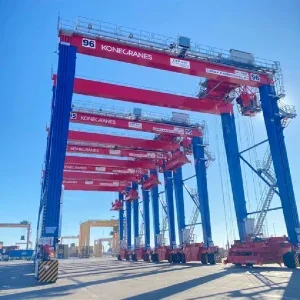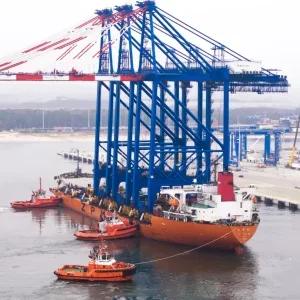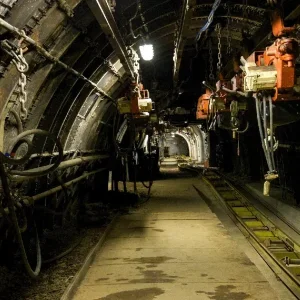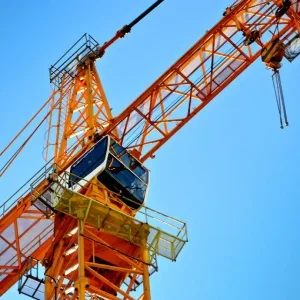When Anglo-Dutch steel producer Corus decided it was time to refurbish its blast furnace at Redcar, it proved to be one of the largest engineering projects in the northeast of England last year. During a 68 day shutdown, the blast furnace was stripped out and refitted with state of the art equipment, copper staves and hearth refractories. Redcar blast furnace is more than 110m high and the hearth is 16m at the bottom. It is the second biggest blast furnace in Europe, beaten only by the one in Tarento, Italy.
The contract to supply lifting equipment and services for the refit was won in competitive tender in April 2000 by Lloyds Equipment Group. Foremost among the lifting equipment supplied were four 50t SWL air hoists to lift a working access gondola which measured approximately 6m by 6m. These hoists were manufactured by JD Neuhaus of Germany.
For the project the top of the blast furnace was removed. In place across the top of the structure were four support beams forming a square. These were tested by Lloyds to 50t plus 25% to ensure they could support the required load of the gondola and associated equipment. Having passed this test, to each beam was fitted a 50t air hoist with a 40m lifting height.
The hoists were used to raise the platform in 500mm increments as each section of the inside of the blast furnace was worked on. The lifting operations were generally conducted during the night shift when fewer people were around. As European regulations forbid the use of lifting hoists for suspending people, chain slings connected the platform directly to the beams at the top. In this way, the beams rather than the hoists took the weight at all times except during the incremental lifts. Once the platform had reached the top, and the old lining had been stripped out, it was then lowered again incrementally to refit the furnace, working from the top down.
Within each hoist line were eight 85t bow shackles and a 50t telemetry load link for constant level measurement. All four hoists were connected to a master control box – a single pendant unit allowing each hoist to be controlled individually or for synchronised control of all four hoists together.
Lloyds Equipment Group regional manager Colin Naylor explains that air hoists were the only solution for the lifts. There was no room to get an overhead crane in, hand chains would not have provided enough control or the necessary synchronisation, and electric power could not have achieved the 50t capacity that was required.
(The hoists were never actually used to anywhere near capacity, but on such projects huge safety margins are built in.) Lloyds’ £250,000 ($375,000) contract also included the supply of 60 other, smaller, air hoists (mostly Red Roosters from Steve Wright Lifting) to other contractors on the project, as well as a training programme for the principal operators.
The blast furnace was back in operation in October 2000 for what is its third campaign. The first campaign began in 1979 and saw 15.1m tonnes of steel produced in seven years. The second campaign began in 1986 and produced almost 44m tonnes.






